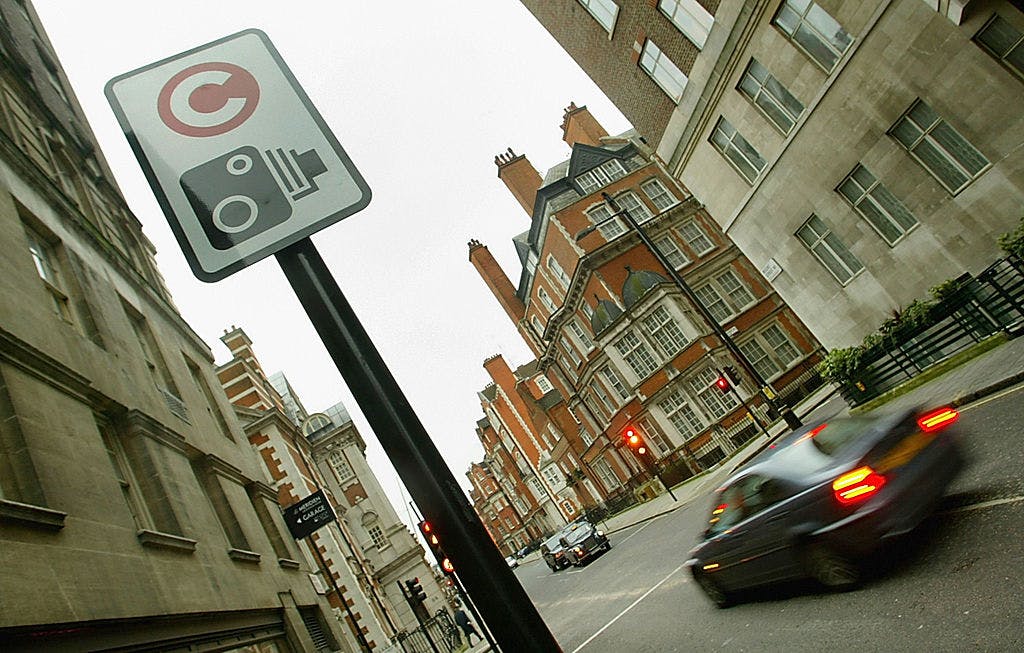A Cautionary Tale for New York as London’s Congestion Tolls — and Overregulation — Have Ruined Nightlife at Britain’s Capital
Anyone who has visited the capital recently will tell you that the city’s nightlife has changed.

New York is set to become the first American city to impose tolls on drivers for accessing its busiest areas. However, London’s experience offers a cautionary tale. The British capital implemented congestion pricing in 2003, but traffic has actually increased since then, despite the price tripling to £15 from £5. Today, London drivers spend the equivalent of 12 days a year in traffic jams. And it is having a deleterious impact on the 700,000 people who work in the night time economy.
London’s night time economy is huge, contributing 40 percent of the £66 billion that the UK industry as a whole generates. Yet the once-famous nightlife of the British capital has all but disappeared because of the excessive red tape and bureaucracy surrounding the hospitality industry.
Anyone who has visited the capital recently will tell you that the city’s nightlife has changed. After a West End show, there are very few options available for dining after 11 p.m. Plan on going to a gig or exploring the renowned pubs and clubs at Soho? You’ll have to leave early to avoid missing the final tube — save for an expensive Uber ride home.
The mayor of London, Sadiq Khan, and the great majority of Labour-run councils bear much of the blame for the onerous regulations and levies that have been imposed on the bars and restaurants at the city. All new venues at Hackney are required to close by 11 p.m. on weekdays and midnight on weekends due to burdensome licensing regulations.
Councils at Camden and Tower Hamlets have introduced a late-night tax on any business that serves alcohol after midnight. Companies are forced to transfer these costs to customers. More than 30 percent of Londoners claim it is too expensive to go out at night, which makes sense given that a pint can cost as much as £9 at the capital.
Amy Lamé was named London’s “night czar” by Mr. Khan in an effort to boost the city’s flagging nightlife. However, her assertion that London is a “truly 24-hour city” is refuted by all available data.
The number of pubs at the capital decreased by 48 percent, to 2,600 from 5,000, between 2001 and 2022. More than a thousand bars and clubs have closed in the last three years. Venues at central London have closed at a faster rate than almost any other city in the U.K.
While lockdown had a negative effect on the economy, the problem predates it: between 2007 and 2018, London lost half of its nightclubs and 40 percent of its live venues. Half of the nightclubs at the capital have closed since Ms. Lamé assumed her position in 2016.
Ms. Lamé attributes much of her success to the Night Time Enterprise Zone initiative. This program aims to improve high streets at the boroughs of Lambeth, Greenwich, and Bromley after 6 p.m. The initiative has designated funds for the creation of murals that support the Portuguese community, the “Pleasure Garden” tunnel, which honors the LGBT+ history of the borough, and a “neuro-diversity” awareness-raising programme at Bromley.
A similar economic model has been adopted in California. While there are many things that San Francisco is known for, late-night culture isn’t one of them. While many of the night markets, such as the one on Irving Street, drew sizable crowds in 2023, they closed at 10 p.m. The night markets were back last week. Only the Grant Avenue event ended at nine o’clock at night. It meant that thousands of prospective customers were left with nothing to do but head home.
For the rest of the year, there are few food options after 10 p.m., and the Bay Area Rapid Transit, which runs public transportation to the East Bay, stops running at midnight. The state is also well known for being anti-business. According to data, California has the fourth-worst taxes for small businesses in the country.
Nevertheless, Mayor London Breed of San Francisco has authorized a budget of $14.6 billion for the upcoming two fiscal years. There’s no specific plan for nightlife. In terms of culture, she has set aside $5.4 million for LGBT programmes and additional funding for artistic endeavors that support the transgender community.
She has not named an industry advocate, unless you count drag performer D’Arcy Drollinger, whom Ms. Breed employed for $55,000 a year in order to make the city “sparkle.” With a $800 million budget deficit, she ought to be promoting business rather than squandering tax dollars on trivial moralistic gestures.
While San Francisco needs to stay open late, the city that never sleeps needs to abandon its move towards congestion tolls. Drivers have the option to travel whenever they want or take a different route. According to an honorary professor at the Center for Transport Studies at University College London, David Metz, “congestion is substantially self-regulating.”
If we want to revive the night time economy, we need to liberalize licensing laws, cut taxes, and do away with virtue signaling on both sides of the Atlantic. When that happens, some of our best cities will be truly incredible places to visit around the clock.
